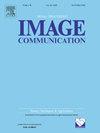Information disentanglement for unsupervised domain adaptive Oracle Bone Inscriptions detection
IF 3.4
3区 工程技术
Q2 ENGINEERING, ELECTRICAL & ELECTRONIC
引用次数: 0
Abstract
The detection of Oracle Bone Inscriptions (OBIs) is the foundation of studying the OBIs via computer technology. Oracle bone inscription data includes rubbings, handwriting, and photos. Currently, most detection methods primarily focus on rubbings and rely on large-scale annotated datasets. However, it is necessary to detect oracle bone inscriptions on both handwriting and photo domains in practical applications. Additionally, annotating handwriting and photos is time-consuming and requires expert knowledge. An effective solution is to directly transfer the knowledge learned from the existing public dataset to the unlabeled target domain. However, the domain shift between domains heavily degrades the performance of this solution. To alleviate this problem and based on the characteristics of different domains of oracle bone, in this paper, we propose an information disentanglement method for the Unsupervised Domain Adaptive (UDA) OBIs detection to improve the detection performance of OBIs in both handwriting and photos. Specifically, we construct an image content encoder and a style encoder module to decouple the oracle bone image information. Then, a reconstruction decoder is constructed to reconstruct the source domain image guided by the target domain image information to reduce the shift between domains. To demonstrate the effectiveness of our method, we constructed an OBI detection benchmark that contains three domains: rubbing, handwriting, and photo. Extensive experiments verified the effectiveness and generality of our method on domain adaptive OBIs detection. Compared to other state-of-the-art UDAOD methods, our approach achieves an improvement of 0.5% and 0.6% in mAP for handwriting and photos, respectively.
无监督域自适应甲骨文检测的信息解纠缠
甲骨文检测是利用计算机技术研究甲骨文的基础。甲骨文资料包括拓片、手迹和照片。目前,大多数检测方法主要集中在拓片上,依赖于大规模的标注数据集。然而,在实际应用中,有必要同时对甲骨文的笔迹域和照片域进行检测。此外,批注笔迹和照片非常耗时,需要专业知识。一种有效的解决方案是直接将从现有公共数据集中学习到的知识转移到未标记的目标领域。然而,域之间的域转移严重降低了该解决方案的性能。为了解决这一问题,本文根据甲骨文不同域的特点,提出了一种用于无监督域自适应(UDA) obi检测的信息解纠缠方法,以提高手写和照片obi的检测性能。具体来说,我们构建了一个图像内容编码器和一个样式编码器模块来解耦甲骨文图像信息。然后,构造重构解码器,在目标域图像信息的引导下重构源域图像,以减少域间的偏移;为了证明我们方法的有效性,我们构建了一个OBI检测基准,它包含三个领域:摩擦、笔迹和照片。大量的实验验证了该方法在域自适应obi检测中的有效性和通用性。与其他最先进的UDAOD方法相比,我们的方法在手写和照片的mAP方面分别提高了0.5%和0.6%。
本文章由计算机程序翻译,如有差异,请以英文原文为准。
求助全文
约1分钟内获得全文
求助全文
来源期刊

Signal Processing-Image Communication
工程技术-工程:电子与电气
CiteScore
8.40
自引率
2.90%
发文量
138
审稿时长
5.2 months
期刊介绍:
Signal Processing: Image Communication is an international journal for the development of the theory and practice of image communication. Its primary objectives are the following:
To present a forum for the advancement of theory and practice of image communication.
To stimulate cross-fertilization between areas similar in nature which have traditionally been separated, for example, various aspects of visual communications and information systems.
To contribute to a rapid information exchange between the industrial and academic environments.
The editorial policy and the technical content of the journal are the responsibility of the Editor-in-Chief, the Area Editors and the Advisory Editors. The Journal is self-supporting from subscription income and contains a minimum amount of advertisements. Advertisements are subject to the prior approval of the Editor-in-Chief. The journal welcomes contributions from every country in the world.
Signal Processing: Image Communication publishes articles relating to aspects of the design, implementation and use of image communication systems. The journal features original research work, tutorial and review articles, and accounts of practical developments.
Subjects of interest include image/video coding, 3D video representations and compression, 3D graphics and animation compression, HDTV and 3DTV systems, video adaptation, video over IP, peer-to-peer video networking, interactive visual communication, multi-user video conferencing, wireless video broadcasting and communication, visual surveillance, 2D and 3D image/video quality measures, pre/post processing, video restoration and super-resolution, multi-camera video analysis, motion analysis, content-based image/video indexing and retrieval, face and gesture processing, video synthesis, 2D and 3D image/video acquisition and display technologies, architectures for image/video processing and communication.
 求助内容:
求助内容: 应助结果提醒方式:
应助结果提醒方式:


